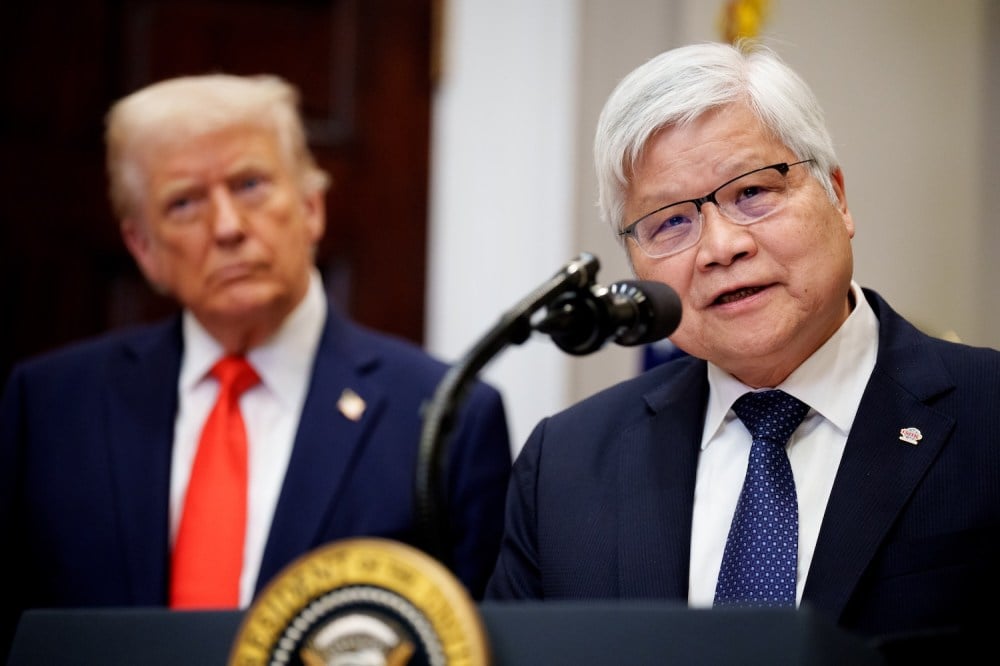Arizona’s desert is now home to some of the world’s most advanced semiconductor plants, hailed as proof that the United States has clawed back control over the technologies of the future. Politicians and pundits celebrated the arrival of the Taiwan Semiconductor Manufacturing Company (TSMC) in Phoenix as a triumph of industrial policy, a sign that Washington can still bend globalization to its will. Ribbon-cuttings and glowing headlines told a story of sovereignty regained.
Yet the latest clash with Taipei suggests otherwise. Just days ago, U.S. Commerce Secretary Howard Lutnick demanded that Taiwan agree to a 50-50 split in chip production, with half relocated to the United States. Taiwan’s Vice Premier Cheng Li-chiun immediately pushed back, stressing that its negotiating team “has never made any commitment to a 50-50 split on chips … nor would we agree to such conditions.”
The dispute coincides with U.S.-Taiwan trade negotiations revolving around a new reciprocal tariff regime. The United States has levied a 20 percent ad valorem duty on many Taiwan goods, but the White House has exempted some semiconductors from these additional tariffs. Taiwan, which in 2024 became the seventh biggest trading partner of the U.S., is concerned that many other key sectors—including data processing equipment, electronics and machinery, comprising much of Taiwan’s U.S. export–—remain vulnerable in talks that have been complicated by Washington’s 50-50 chip demand.
The episode underscores that, despite billions being poured into Arizona, Washington cannot dictate Taiwan’s industrial future. That reality points to the deeper paradox: the tech oasis taking shape in the desert may just be a mirage. Far from signaling independence, TSMC’s $165 billion investment is best understood as a hedge, an insurance policy against disruption in the Taiwan Strait.
Since 2020, when TSMC launched its Phoenix project to appease U.S. President Donald Trump, subsidies under former U.S. President Joe Biden’s CHIPS Act have fueled its expansion. Now in his second term, Trump has hardened the rhetoric. Lutnick openly links Arizona’s semiconductor factories, known as fabs, to U.S. security commitments, dismissing the “silicon shield” theory that Taiwan’s chip dominance deters Chinese attack. His logic is blunt: If 95 percent of the world’s advanced chips are made in Taiwan, then those chips cannot defend Taiwan unless a significant share is also produced in the United States.
What started as political theater has become a showcase of whose deeper logic is less about decoupling than about reconfiguring globalization. The more that Arizona is held up as evidence of independence—or at least a pathway to it—the more it reveals how tightly entangled the United States remains with Taiwan.
The Arizona complex began as one modest fab and has grown into multiple facilities; by January 2025, the first was producing four-nanometer chips, hailed as historic by then-U.S. Commerce Secretary Gina Raimondo. The symbolism was powerful: For the first time in decades, leading chips were being made on U.S. soil.
Yet Taiwan remains TSMC’s crown jewel, with 10 fabs and five backend facilities there producing most of its chips, including its most advanced designs, with 11 more planned. Arizona will eventually host six fabs (it broke ground on the third in April)—important additions, but only a fraction of TSMC’s global capacity. The company has repeatedly emphasized that its center of gravity remains in Taiwan, with U.S. facilities meant to complement rather than replace its home base. The message is unmistakable: This is insurance, not a transfer of headquarters. And Taipei’s rejection of a 50-50 deal confirms that its leaders view retaining production dominance as essential to their security, not a bargaining chip to be traded away.
The insurance logic is pragmatic. By diversifying production, TSMC reassures its American customers—Apple, Nvidia, AMD—that not every wafer is tied to the Taiwan Strait. It also reassures Washington. The second Trump administration can point to Arizona as proof that industrial policy delivers. The project has brought modest gains: a few Taiwanese suppliers that have set up locally, new training programs, and some packaging capacity. In a crisis, even partial domestic production offers more resilience than the United States had before, which was essentially none.
But reassurance is not the same as sovereignty.
The claim that Arizona marks a clean break in supply chains falters when examined closely. Arizona’s fabs still depend on Taiwanese engineers, Hsinchu-led research and development, and Asian-sourced inputs—proof that Washington has outsourced its onshoring. And in Taipei, an opposition Kuomintang legislator warned that U.S. demands risk “exploiting and plundering” Taiwan’s advantages and weakening the very shield that deters Beijing.
This is not self-sufficiency. It is dependency in a new form. Washington cannot claim genuine sovereignty when its premier manufacturing project relies so heavily on foreign know-how and supply chains. Meanwhile, China is moving faster to cultivate autonomy. By blocking Nvidia’s AI chips, Beijing has forced its domestic champions to innovate. Huawei’s Ascend clusters are beginning to provide alternatives, even if they fall short in efficiency. Yet without access to extreme ultraviolet lithography machines, China’s path to the cutting edge remains blocked.
Still, the contrast is striking: While Washington celebrates symbolic decoupling, Beijing is building partial self-reliance.
What Arizona really shows is not the end of globalization but its reinvention. Inside the fabs, equipment is Dutch, chemicals are Japanese, subsidies are American, and engineers are Taiwanese. Even chips produced in Arizona are often shipped abroad for packaging until U.S. facilities scale. The semiconductor remains the most globalized product in existence, and the Arizona experiment demonstrates that borders cannot contain it.
This sits uneasily with the sovereignty rhetoric. Billions in U.S. subsidies are not flowing to Intel but to TSMC, a foreign company whose strategic decisions will always reflect the realities of Taipei and Hsinchu. Washington is effectively underwriting the transplantation of a Taiwanese ecosystem, hoping it will take root in the desert. That may sound like pragmatism—no American firm currently matches TSMC’s prowess—but it is hardly sovereignty reclaimed. The latest 50-50 standoff drives home the point: The United States cannot command sovereignty by fiat when the linchpin of its strategy is unwilling to concede control.
The economics deepen the paradox. Arizona fabs cost at least 50 percent more than Taiwan’s, depend on subsidies, and still lean on imported talent. Training programs are underway, but building an expertise base to rival Taiwan’s will take years.
The supply chain remains fragile. Despite a few Taiwanese chemical companies opening small plants in Arizona, most critical materials are still sourced from Asia. That tether leaves Arizona’s fabs vulnerable to disruption or delay. Without a full supplier ecosystem, the U.S. foothold will remain shallow, propped up by subsidies and political will.
The strategic risks are sharper still. In a Taiwan Strait crisis, Washington would turn to Arizona as a safety net, but the net could prove too thin without scale. In that scenario, China—forced by sanctions to accelerate domestic innovation—might muddle through with indigenous capacity, while the United States would still be scrambling. And if, as has Lutnick argued, the United States’ ability to defend Taiwan rests on having half the production at home, then Taipei’s refusal leaves Washington with symbolism but not sovereignty.
TSMC’s Arizona project is celebrated as proof that the United States is reclaiming sovereignty over the technology that powers artificial intelligence, advanced weapons systems, and the digital economy. The deeper story is less flattering. Arizona is insurance, not independence.
For all its fragility, the project is not meaningless. It has created political reassurance, modest industrial gravity, and the seed of an American semiconductor workforce. Yet these are fragments, not foundations. It does not reduce dependency so much as reconfigure it. Far from decoupling, it underscores how tightly entangled the United States remains with Taiwan, even as China edges closer to partial autonomy. And the flare-up over a 50-50 split makes it clear that this entanglement is not just economic but political. Arizona may glitter in the desert sun, but without Taiwanese consent, it risks being remembered as an expensive mirage.
The post Is the Arizona Tech Oasis a Mirage? appeared first on Foreign Policy.




